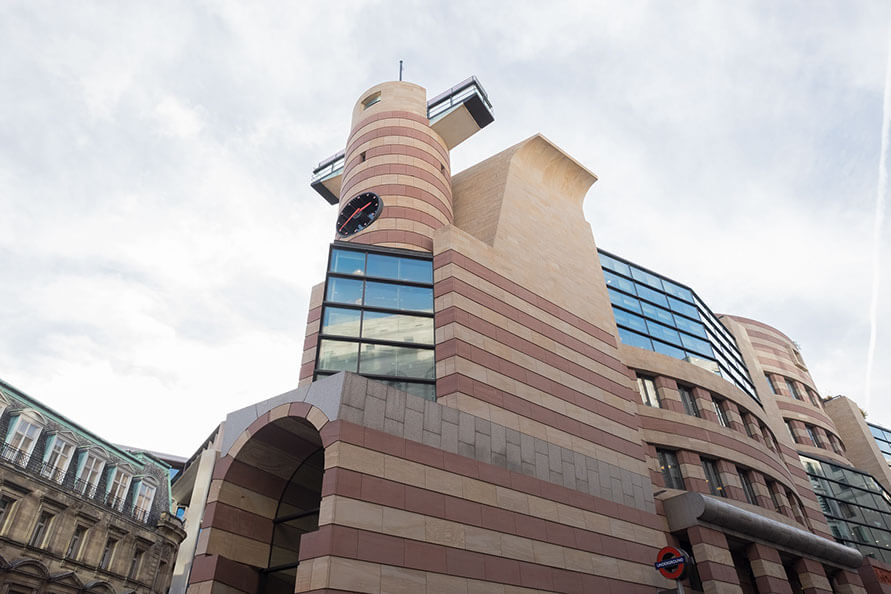
No. 1 Poultry
Location: London, UK
This prestigious but controversial development in the City of London involved the demolition of a Grade 1 listed structure. The site effectively represents an island, being isolated by roads and a number of London Underground (LU) tunnels, typically two to three metres from the perimeter of the site.
Two LU Central Line tunnels lie to the North while three LU Waterloo & City Line tunnels are present to the South. All of these tunnels converge at Bank underground station which is just to the east of the Site. The LU tunnels were constructed over one hundred years ago with cast iron segmental linings. The tunnels themselves are sensitive to distortions, as is the machinery inside the tunnels, such as the pedestrian “Trav-o-lator” or moving walkway contained within one of the LU Waterloo & City Line tunnels.
GCG were engaged as a specialist sub-consultant to provide an independent interpretation of the ground conditions and advise on the bored tunnel construction methodology. GCG performed a holistic interpretation of the ground investigations to confirm the contractor’s ground model and in particular the characteristics of a highly porous, variably cemented coralline limestone layer located at a critical section of the tunnel alignment.
GCG also advised on soil conditioning treatments for EPB tunnelling on the project. This involved designing and performing a series of laboratory tests to assess the feasibility of conditioning the different materials to be encountered for successful EPB tunnelling and informed the selection of appropriate tunnelling methods for the ground encountered at different sections along the alignment. GCG were also involved in field monitoring of the TBM spoil properties and the machine operations throughout the tunnel construction.